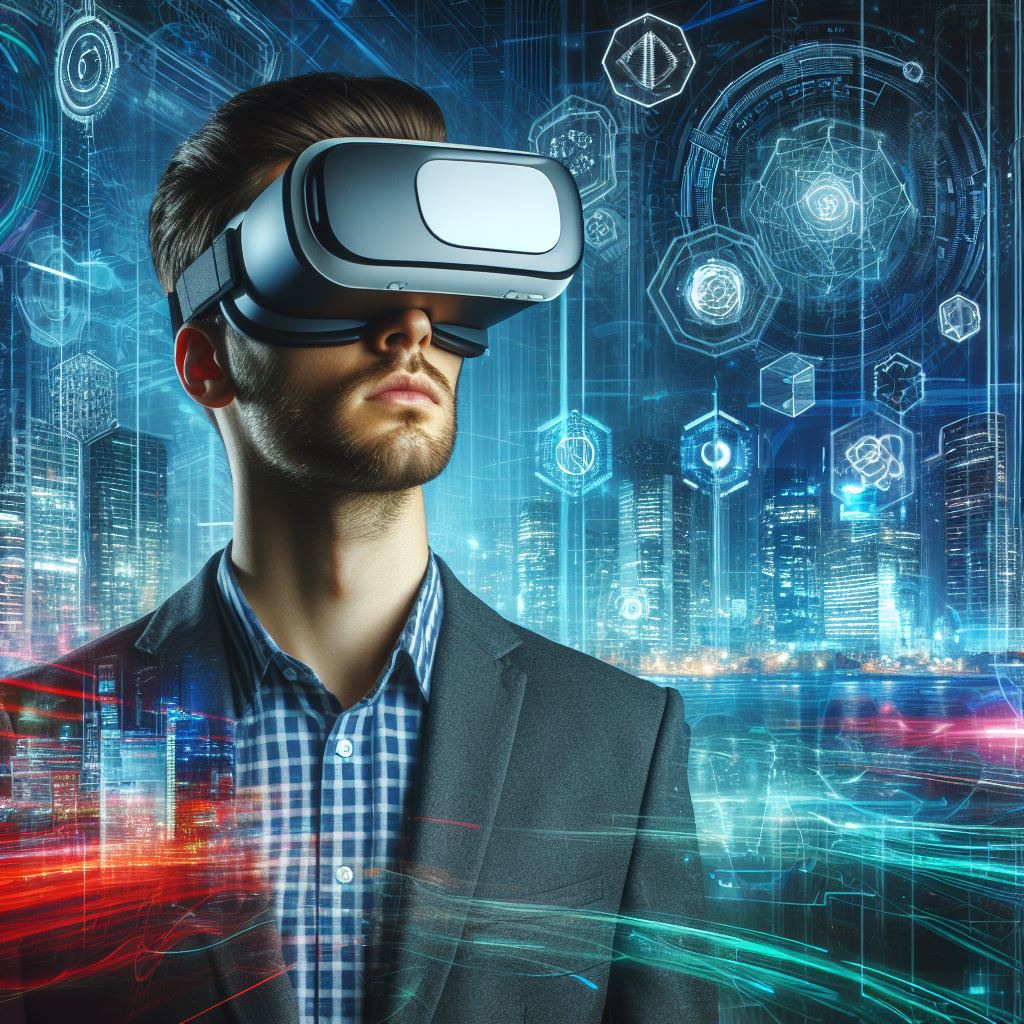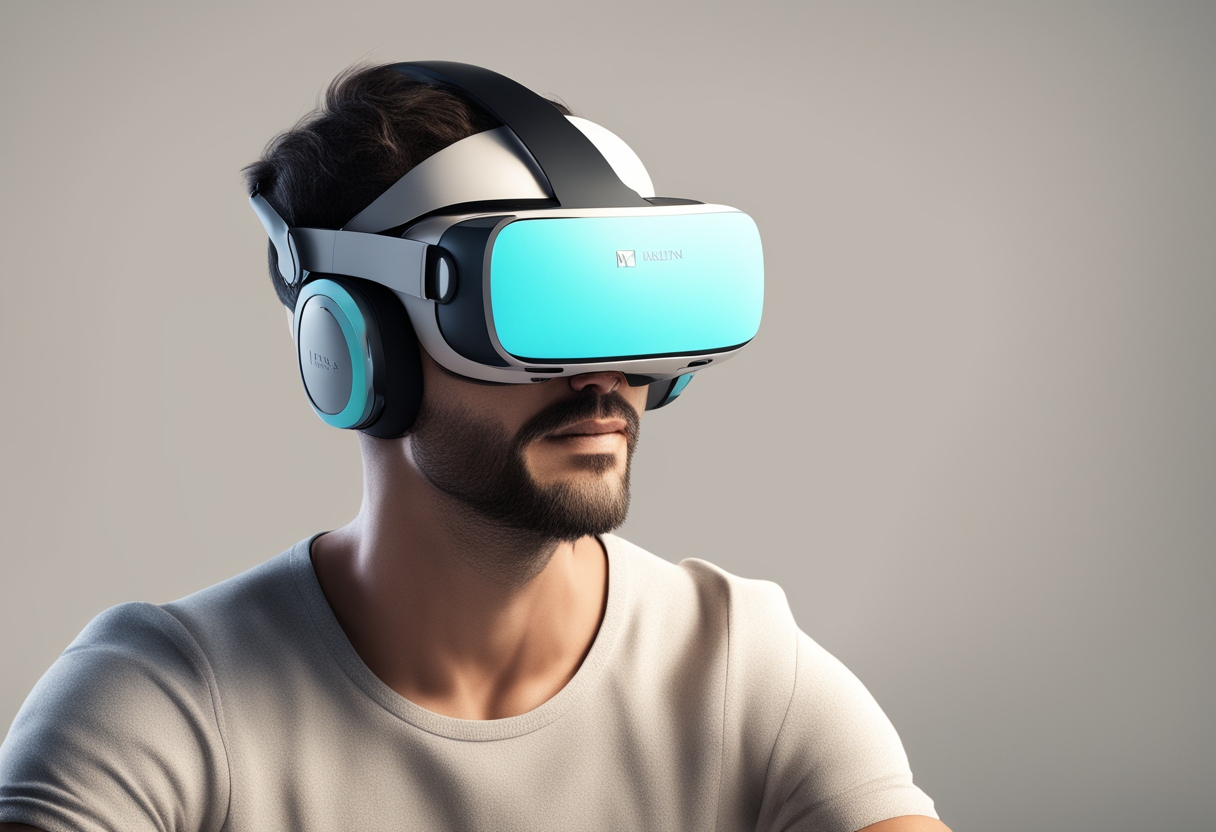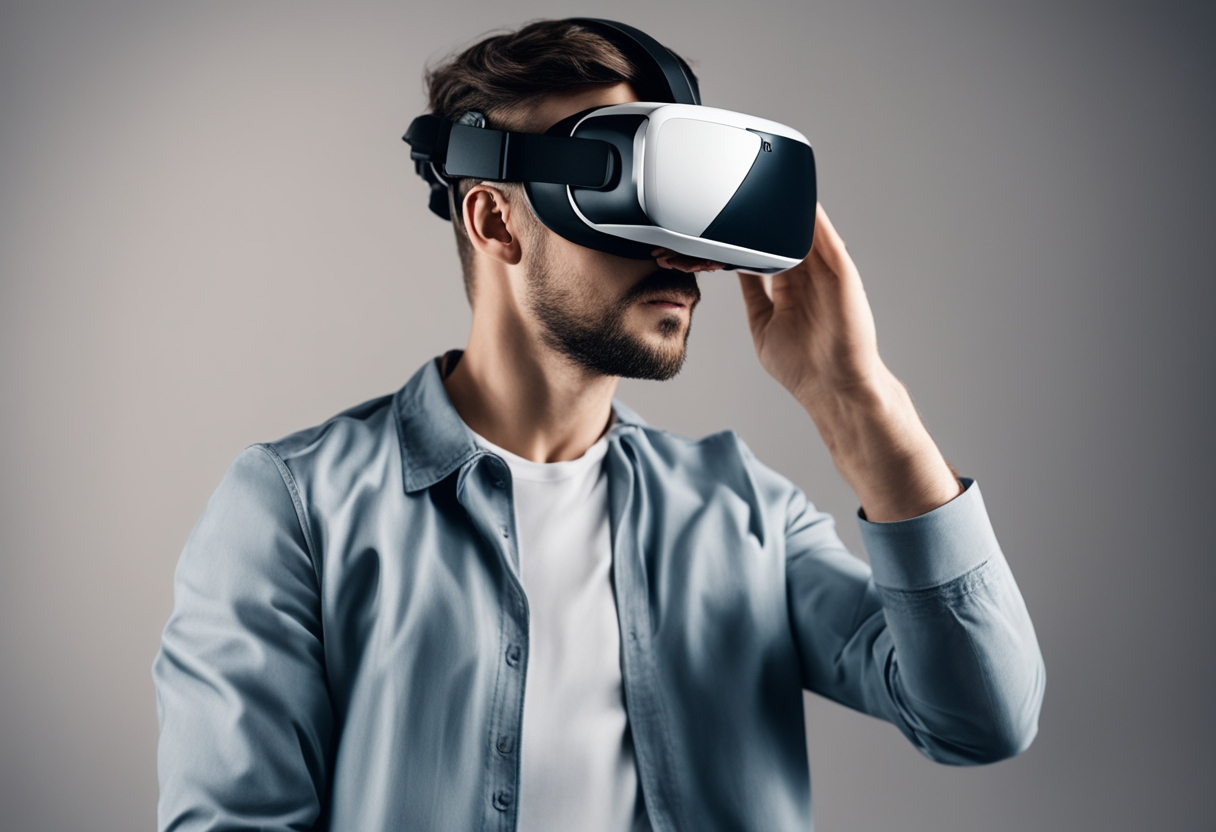The Role of MLCC in VR Headset

Multilayer Ceramic Capacitors (MLCCs) are essential components in the electronics industry, including in virtual reality (VR) headsets. These tiny components play a crucial role in filtering, decoupling, and stabilizing the electrical signals within VR headsets, ensuring smooth operation and optimal performance.

Applications of MLCCs in VR Headsets
Virtual reality (VR) headsets utilize Multilayer Ceramic Capacitors (MLCCs) in various components and circuits to ensure optimal performance and reliability. Some key parts of a VR headset that require MLCCs include:
Power Management Circuitry:
MLCCs are used in the power management circuitry of VR headsets to regulate and stabilize the power supply. They help filter out noise and ensure consistent power delivery to the headset’s components.
Display Panels:
MLCCs are used in the display panels of VR headsets to control the brightness and color accuracy of the display. They help stabilize the voltage and ensure smooth operation of the display.
Processor and Memory Modules:
MLCCs are used in the processor and memory modules of VR headsets to manage the flow of data and instructions. They help improve the speed and efficiency of data processing.
Sensors and Tracking Modules:
MLCCs are used in the sensors and tracking modules of VR headsets to enhance motion tracking and spatial awareness. They help ensure accurate tracking of the user’s movements.
Audio Processing and Amplification:
MLCCs are used in the audio processing and amplification circuits of VR headsets to enhance the audio quality and ensure clear, immersive sound.
Wireless Communication Modules:
MLCCs are used in the wireless communication modules of VR headsets to facilitate wireless connectivity. They help ensure stable and reliable wireless communication.
Control and Interface Circuits:
MLCCs are used in the control and interface circuits of VR headsets to manage user inputs and interface with external devices. They help ensure smooth operation of the headset’s controls and interfaces.

Benefits of MLCCs in VR Headsets
Multilayer Ceramic Capacitors (MLCCs) offer several key benefits in virtual reality (VR) headsets, contributing to their performance, reliability, and user experience. Here are some of the main advantages of using MLCCs in VR headsets:
1. Improved Power Efficiency:
MLCCs help regulate and stabilize the power supply within VR headsets, ensuring efficient use of energy and prolonging battery life, particularly in wireless VR devices.
2. Noise Reduction:
MLCCs act as effective filters, reducing electromagnetic interference (EMI) and noise in VR headset circuits. This helps maintain signal integrity and prevents interference from affecting audiovisual quality.
3. Signal Stability:
By stabilizing voltage levels, MLCCs contribute to stable and reliable signal transmission within VR headsets. This is essential for maintaining smooth and responsive performance, especially in VR applications requiring real-time interaction.
4. Compact Design:
MLCCs are available in small and compact sizes, making them ideal for use in the compact and lightweight design of VR headsets. Their high capacitance-to-size ratio allows for effective power management without adding bulk to the device.
5. High Capacitance and Voltage Ratings:
MLCCs offer high capacitance values and voltage ratings, allowing them to handle the power demands and voltage fluctuations common in VR headset circuits. This ensures that the components receive the necessary power for optimal performance.
6. Reliability and Durability:
MLCCs are known for their reliability and durability, making them suitable for the demanding conditions of VR headset applications. They can withstand temperature variations, mechanical stress, and other environmental factors, ensuring long-term performance.
7. Enhanced User Experience:
By contributing to the overall performance and reliability of VR headsets, MLCCs help enhance the user experience. They ensure that users can enjoy immersive VR content without interruptions or technical issues.
MLCC Requirements for VR Headsets
Virtual reality (VR) headsets require Multilayer Ceramic Capacitors (MLCCs) that meet specific requirements to ensure optimal performance and reliability. These requirements are influenced by factors such as the power demands of the headset, the complexity of the circuitry, and the need for compact and lightweight design. Here are the key requirements for MLCCs in VR headsets:
1. Capacitance Values:
VR headsets require MLCCs with a range of capacitance values to meet different power demands across the circuitry.
MLCCs with higher capacitance values are often needed for components that require more power, such as display panels, processors, and sensors.
2. Voltage Ratings:
MLCCs in VR headsets must have voltage ratings that match or exceed the maximum voltage levels in the headset’s circuitry.
Higher voltage ratings are required for components that experience voltage spikes or fluctuations, such as during power-on or power-off sequences.
3. Size and Form Factor:
MLCCs used in VR headsets need to be compact and lightweight to fit within the limited space available in the headset’s design.
Small-sized MLCCs are preferred to minimize the overall weight of the headset and allow for more efficient use of space.
4. Temperature and Environmental Resistance:
MLCCs must be able to withstand the temperature variations and environmental conditions experienced in VR headset applications.
They should be resistant to factors such as humidity, dust, and mechanical stress to ensure long-term reliability.
5. Low ESR and ESL:
MLCCs with low Equivalent Series Resistance (ESR) and Equivalent Series Inductance (ESL) are preferred for VR headsets to minimize power losses and maintain signal integrity.
Low ESR and ESL help ensure stable voltage levels and reduce the risk of noise and interference in the circuitry.
6. Compatibility with SMT Assembly:
MLCCs used in VR headsets must be compatible with Surface Mount Technology (SMT) assembly processes, which are commonly used in electronics manufacturing.
They should have suitable terminations and packaging that facilitate easy and reliable mounting on PCBs.
Comparing MLCCs with Other Capacitor Technologies in VR Headsets
When it comes to capacitor technologies used in virtual reality (VR) headsets, several options are available, each with its own set of advantages and disadvantages. Here, we compare Multilayer Ceramic Capacitors (MLCCs) with other capacitor technologies like tantalum capacitors and polymer capacitors in terms of performance, cost, and reliability:
1. Performance:
MLCCs: MLCCs are known for their high capacitance values and low Equivalent Series Resistance (ESR) and Equivalent Series Inductance (ESL), making them ideal for high-frequency applications in VR headsets. They offer excellent filtering and decoupling performance, contributing to stable power supply and signal integrity.
Tantalum Capacitors: Tantalum capacitors also offer high capacitance values and are known for their low leakage current and high reliability. However, they may not perform as well as MLCCs in high-frequency applications.
Polymer Capacitors: Polymer capacitors are known for their low ESR and high ripple current capabilities, making them suitable for applications requiring high-performance power delivery. However, they may not offer the same level of capacitance as MLCCs or tantalum capacitors.
2. Cost:
MLCCs: MLCCs are generally more cost-effective compared to tantalum capacitors, especially for applications requiring high capacitance values. However, prices can vary depending on factors such as size, voltage rating, and manufacturer.
Tantalum Capacitors: Tantalum capacitors are typically more expensive than MLCCs due to the cost of tantalum material and manufacturing processes. They are often used in applications where high reliability and performance are required, despite the higher cost.
Polymer Capacitors: Polymer capacitors are usually more expensive than MLCCs but can be more cost-effective than tantalum capacitors. The higher cost is often justified by their superior performance and reliability in specific applications.
3. Reliability:
MLCCs: MLCCs are known for their reliability and durability, with a long operating life and minimal risk of failure under normal operating conditions. They are resistant to temperature variations, mechanical stress, and environmental factors.
Tantalum Capacitors: Tantalum capacitors are also known for their reliability, with low failure rates and long operating life. However, they are more sensitive to voltage spikes and reverse polarity, which can lead to catastrophic failure if not properly managed.
Polymer Capacitors: Polymer capacitors are generally considered reliable, with good temperature stability and low ESR. However, they may not be as durable as MLCCs or tantalum capacitors in some applications.
Future Prospects of MLCCs in VR Headsets
Multilayer Ceramic Capacitors (MLCCs) are poised to play a significant role in the future of virtual reality (VR) headsets, driven by advancements in VR technology and emerging trends in MLCC development. Here’s a look at the potential future prospects of MLCCs in VR headsets:
1. Miniaturization and Increased Capacitance:
As VR headsets continue to evolve toward smaller and more lightweight designs, there will be a growing demand for MLCCs that offer higher capacitance values in smaller form factors.
Advancements in MLCC technology may lead to the development of ultra-miniaturized MLCCs with even higher capacitance values, enabling further miniaturization of VR headset components.
2. Enhanced Signal Processing and Communication:
MLCCs will continue to play a crucial role in signal processing and communication within VR headsets, ensuring stable power supply and signal integrity.
Future MLCCs may be optimized for high-speed data transmission and processing, supporting advanced features such as real-time multiplayer gaming and seamless wireless connectivity.
3. Integration with Sensor and Display Technologies:
MLCCs will be integrated more closely with sensor and display technologies in VR headsets, supporting advanced features such as eye-tracking, facial recognition, and gesture control.
MLCCs may be tailored to meet the specific requirements of these technologies, offering improved performance and reliability.
4. Energy Efficiency and Battery Life:
MLCCs will play a key role in improving the energy efficiency of VR headsets, prolonging battery life and reducing the need for frequent recharging.
Future MLCCs may be designed to minimize power losses and optimize power distribution, leading to longer-lasting VR experiences.
5. Environmental Sustainability:
As environmental sustainability becomes a greater concern, future MLCCs may be developed using more eco-friendly materials and manufacturing processes.
Manufacturers may also focus on recycling and reusing MLCCs to reduce electronic waste and promote a circular economy.
In conclusion, MLCCs are set to play a pivotal role in shaping the future of VR headsets, supporting advancements in technology and driving innovation in the VR industry. As VR continues to evolve and become more integrated into our daily lives, the demand for high-performance, reliable, and efficient MLCCs will only continue to grow.
